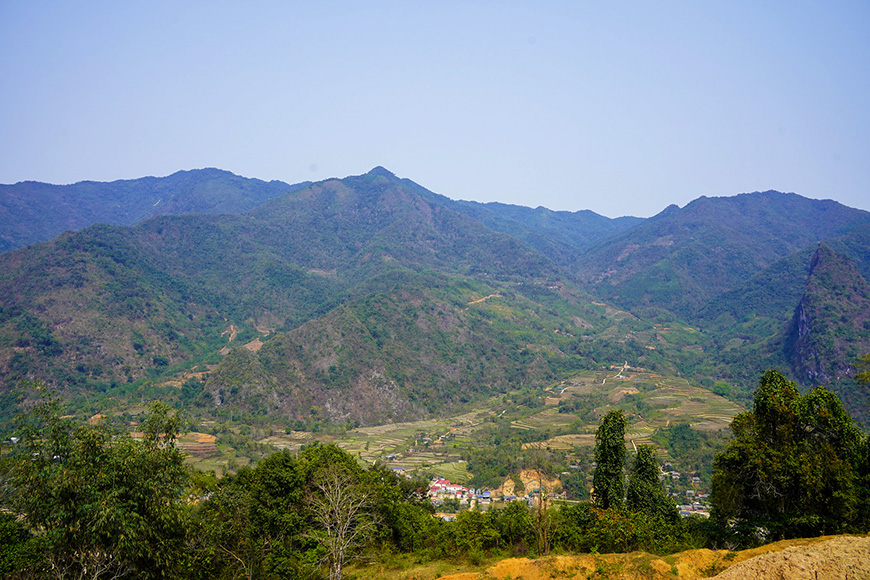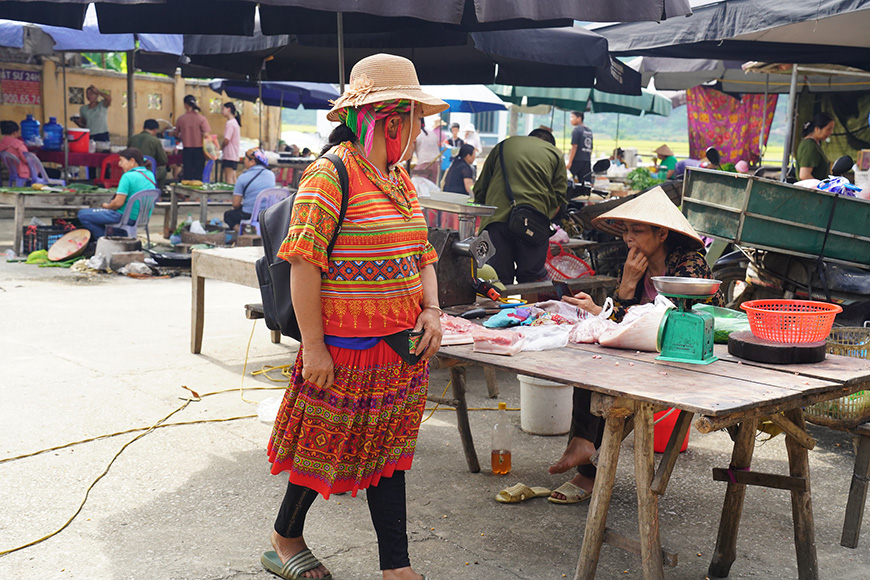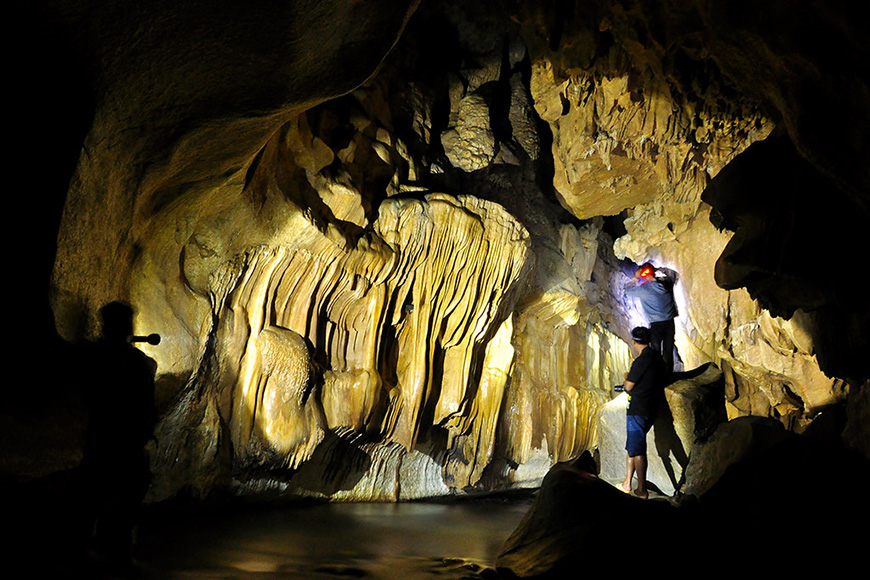Located in the northeast of Vietnam,
Bac Kan reveals itself as a mountainous province with beautifully preserved landscapes, offering a unique experience to travelers seeking authenticity, communion with nature, and cultural immersion.

At the gate of Ba Be National Park, Bac Kan province - Mr Linh's Adventures
A sanctuary of nature and culture
Bac Kan is rich in exceptional natural and cultural heritage. Its
primary forests are home to remarkable biodiversity, where numerous
endemic species of fauna and flora thrive. The highlight of this natural wealth is undoubtedly
Ba Be National Park, which captivates visitors with its mountain lake and spectacular caves. Hiking enthusiasts will find joy on the trails winding through terraced rice fields and traditional villages, offering breathtaking panoramas.
Ecotourism here is a gateway to discovering the fascinating culture of ethnic minorities, including the Tay, Hmong, and Dao. Their picturesque villages, colorful markets, and artisanal skills provide an authentic glimpse into Vietnamese rural life.

Inter-provincial zone with ATK revolutionary base relics Dinh Hoa/Bac Kan - Internet
Historical flashback
Bac Kan Province played a strategic role during the Indochina War as a security zone (ATK) for the Party's Central Committee. As a revolutionary base, it actively supported the war effort, especially during the Viet Bac campaign (Autumn - Winter 1947), where many acts of bravery marked history. Today, Bac Kan preserves 11 historical and revolutionary sites recognized by the State. These sites include Na Tu, where the young volunteer team was stationed, and Cho Don, which houses important locations like Ban Ca, where Uncle Ho lived in late 1947, and Khuoi Linh, which hosted the Party's Central Committee and where Secretary General Truong Chinh worked. Na Pau Hill also bears witness to Uncle Ho's work, and General Vo Nguyen Giap lived and worked in Bac Kan before 1945.
Geography and climate
Bac Kan Province, covering an area of just under 5,000 km², is bordered by the provinces of Cao Bang, Lang Son, Thai Nguyen, and Tuyen Quang. The Phja Bjooc mountain range, reaching an altitude of 1,575 meters, is the highest in the province. It stretches from the foot of Phja Uac in Nguyen Binh - Cao Bang to the town of Phu Thong. This mountain range stands as a natural barrier, protecting Bac Kan's fertile valleys. The province's tropical climate is characterized by contrasts, with a wet season (May-October) and a dry season (November-April). Average temperatures range from 15°C in winter to 30°C in summer. In terms of rainfall, the province receives a significant amount of precipitation, especially during the rainy season.

Puong Cave, a must-see in Ba Be National Park, Bac Kan province - Mr Linh's Adventures
Iconic landscapes
Ba Be Lake: Vietnam's largest natural freshwater lake, surrounded by karst mountains.
Ba Be Forest: Recognized wet tropical forest site under the RAMSAR convention.
Puong Cave: Impressive geological site carved by the Nang River.
Tham Phay Cave: A vast underground river network shaped by erosion and tectonics over hundreds of millions of years. This cave hosts a rich flora and fauna, as well as a spectacle of stalagmites and stalactites, a true underground masterpiece.
Dau Dang Waterfall: Sometimes noisy, always poetic, Dau Dang cascades for over 1,000 meters, leaping between rocks.

Bac Kan and its vibrant local markets - Mr Linh's Adventures
Ba Be National Park: Ecotourism gem in Bac Kan
Ba Be lake, Vietnam's largest natural freshwater lake, is the central point of Ba Be National Park. Its 3 "petals," Ba Be in Tay meaning "three bays," are connected by a narrow passage, where limestone peaks covered in impenetrable jungle rise.
Surrounded by limestone mountains and dense forests, this lake offers activities such as
kayaking,
boat trips, or simply a
peaceful day by the water. The karst geology of the region has given rise to some of
the most spectacular caves in the northern part of the country. While
Puong is the most famous,
Tham Phay, known as the "
Son Doong of the North," is gaining popularity as a destination offering unique experiences. The most adventurous can explore the region through trekking and cycling tours, revealing stunning views of terraced rice fields and wooded peaks. The park boasts
exceptional biodiversity, with over 1,200 plant species and 600 animal species, some of which are rare or endangered. Culture enthusiasts will also appreciate the
An Ma Temple.

Xuan Lac Nature Reserve, where wild life meets culture and history - Mr Linh's Adventures
Other tourist attractions in Bac Kan
Xuan Lac nature reserve: Nestled roughly 1,000 meters high, this impressive area spans over 4,100 hectares. Its year-round cool climate and breathtaking scenery, combined with a rich history and culture, create a prime foundation for tourism in the region.
Kim Hy nature reserve: A sanctuary for endemic fauna and flora, perfect for birdwatching and discovering rare plants.
Ban Chang lake: A semi-circular natural lake surrounded by pine forests, ideal for swimming, fishing, and camping.
Ecotourism and sustainable development
Bac Kan places sustainable ecotourism at the heart of its development. The plan for 2021-2030 aims to welcome 150,000 visitors per year while preserving the province's precious environment. Initiatives include
homestays with ethnic minorities, offering visitors an immersion into local customs and direct support to the local economy.

Bac Kan, a terroir with many flavours - Mr Linh's Adventures
Local cuisine and specialties
Cooc Mo Cake: A traditional cake shaped like a cow's horn, made with glutinous rice and beans, wrapped in banana leaves.
Khau Nhuc: A popular local dish prepared with pork cooked in a flavorful sauce.
Bac Kan, a natural wonderland
Bac Kan is a top destination for travelers seeking an authentic exploration of Vietnam's wild nature while supporting responsible tourism. With its spectacular yet peaceful landscapes and a multitude of outdoor activities, this province promises an unforgettable experience.

Formerly Lo Mo cave, Tham Phay cave is the Son Doong of the northern Vietnam - Mr Linh's Adventures
Practical Information
How to get there from Hanoi?
From Hanoi, you can reach Bac Kan by bus or car. The bus journey takes about 5 hours and tickets cost around $10. By car, expect a minimum of 3 hours on the road.
Best time to visit Bac Kan
The best time to visit Bac Kan is between October and April, when temperatures are mild and landscapes are particularly lush. Avoid the hotter and more humid summer months.